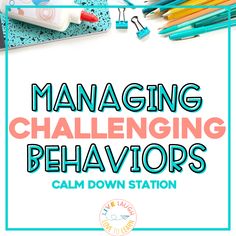In today’s diverse educational landscape, finding the right balance between reward and punishment in the classroom has become more crucial than ever. Educators are consistently striving to create an environment where students feel motivated to learn and engage while maintaining discipline and respect for their peers and teachers. Achieving this equilibrium demands a delicate blend of strategies that incorporate praise, incentives, consequences, and corrective measures.
Benefits of Reward Systems
Reward systems in education are designed to motivate students by using praise, recognition, or tangible incentives. This can range from verbal appreciation for a job well done to badges or tangible gifts for achieving specific milestones or demonstrating exceptional behavior.
1. Encouragement of Positive Behavior: When students receive rewards, they are encouraged to continue exhibiting positive behavior, creating a cycle of ongoing reinforcement.
2. Inclusivity: Reward systems have proven effective in engaging reluctant learners or those struggling academically by offering additional motivation.
3. Healthy Competition: Although competition can sometimes be unhealthy, when it is employed appropriately, it can drive students to perform better by challenging them to reach higher levels of achievement.
Implementing Punishment Appropriately
Punishment serves as a corrective measure to deter undesirable behavior and maintain order and discipline in the classroom. It is imperative that punishment is not perceived as vengeance but rather as guidance towards responsible conduct.
1. Establishing Clear Expectations: Make sure students are aware of the rules and consequences before implementing any punishment. This transparency will help them understand why punishment is being enforced.
2. Consistency: Aim for consistency when utilizing punishment measures. Implement penalties fairly across all students who disobey classroom guidelines.
3. Encourage Reflection: Once punishment has been enforced, provide time for reflection on the student’s actions and work out a plan together to change such behavior in the future.
Finding the Right Balance
To ensure an effective learning environment, educators must strike a delicate balance between reward and punishment in the classroom. Here are some tips to maintain this equilibrium:
1. Positive Reinforcement: Prioritize positive reinforcement over punishment. Encourage students to focus on their achievements, strengths, and improvements.
2. Tailor Experiences: Not all students respond the same way to rewards or punishments. Therefore, varying approaches and personalizing reinforcement strategies can better cater to individual needs.
3. Emphasize Learning: Ensure that both rewards and punishments are connected to the learning goals. For example, link praise with specific learning objectives rather than general compliments.
4. Collaborative Environment: Involve students in the decision-making process when forming rules and consequences. This will create a culture of mutual respect and shared responsibility.
In conclusion, achieving the right balance between rewards and punishment in the classroom requires emphasis on positive reinforcement, individualized approaches, learning-focused goals, and collaborative decision-making. By carefully considering these factors, educators can create an environment that promotes motivation, discipline, and respect – all essential components for fostering academic success in today’s dynamic educational landscape.











